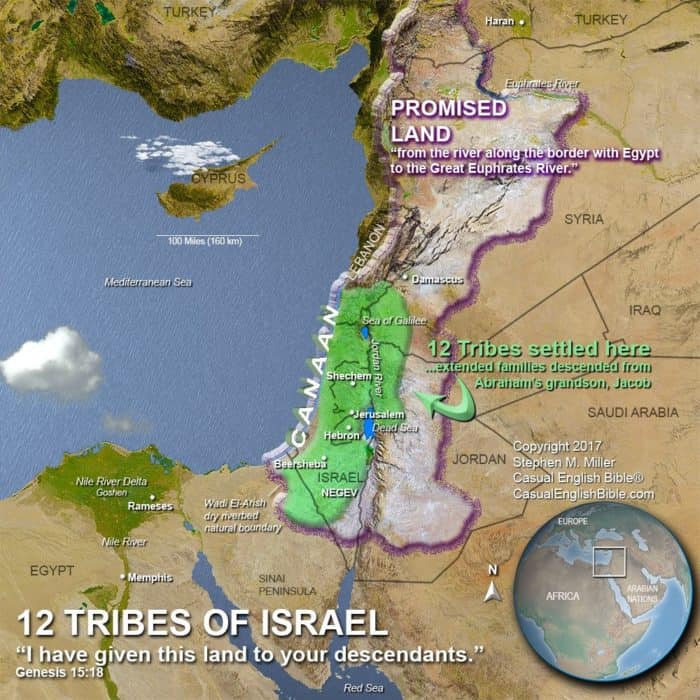
Promised Land
Promised Land
Land covered in milk and honey
"The Promised Land" is a term Bible writers used to talk about the land that God promised to the Israelites, ancient ancestors of today's Jewish people. People also knew it as Canaan, and described it as "a fertile land where milk and honey flow like rivers" (Exodus 3:17, Casual English Bible).
Boundary descriptions vary
Bible writers describe boundaries of the Promised Land in different ways. In Genesis 15:18-21, God made a covenant with Abraham and gave him the following description of the boundaries: "Everything from the river along the border with Egypt to the great Euphrates River. "
This description covers a vast area, including parts of modern-day Egypt, Israel, Palestine, Jordan, and Syria. The Casual English Bible explains that this description was probably more of a general outline, rather than precise borders.
Boundary in Numbers
Later in the book of Numbers, Moses gave a more detailed description of the Promised Land's boundaries.
South
"The Zin Desert will become your southern border. It will extend over to Edom’s border and up the southern tip of the Dead Sea...
West
You have a natural boundary on the west coast: the Mediterranean Sea.
North
For your northern border, draw a line from the Mediterranean Sea to Mount Hor of the northland. Stretch that line from Mount Hor to Lebo-hamath to Zedad. Keep the line going to Ziphron and all the way to Hazarenan. That’s your northern border.East
Now for your eastern border. Start your line at Hazar-enan. Run it south to Shepham. 11Take the line down to Riblah along Ain’s east side. Run it down into the hills east of the Sea of Galilee. Then take that line straight down the Jordan River, all the way to the Dead Sea. There you have it, the borders of your land on all four sides" (Numbers 32:3-12).
The Casual English Bible suggests that this description may have been a more precise boundary, but it is still not very specific regarding the southern and eastern borders.
Ezekiel’s boundaries
The book of Ezekiel provides yet another description of the boundaries of the Promised Land. Ezekiel's description is more specific, saying that the land would be divided among the tribes of Israel and would include the land of Judea and Samaria. Some scholars say this description was meant to be symbolic, rather than actual borders.
Despite the differences in the descriptions of the Promised Land's boundaries, one point seemed clear to Bible writers: God promised this land to the Israelites as their inheritance, and he delivered on that promise. The Promised Land is a central theme in the Bible, representing a place of God's provision, where his people can live in peace and prosperity.
Promised Land

